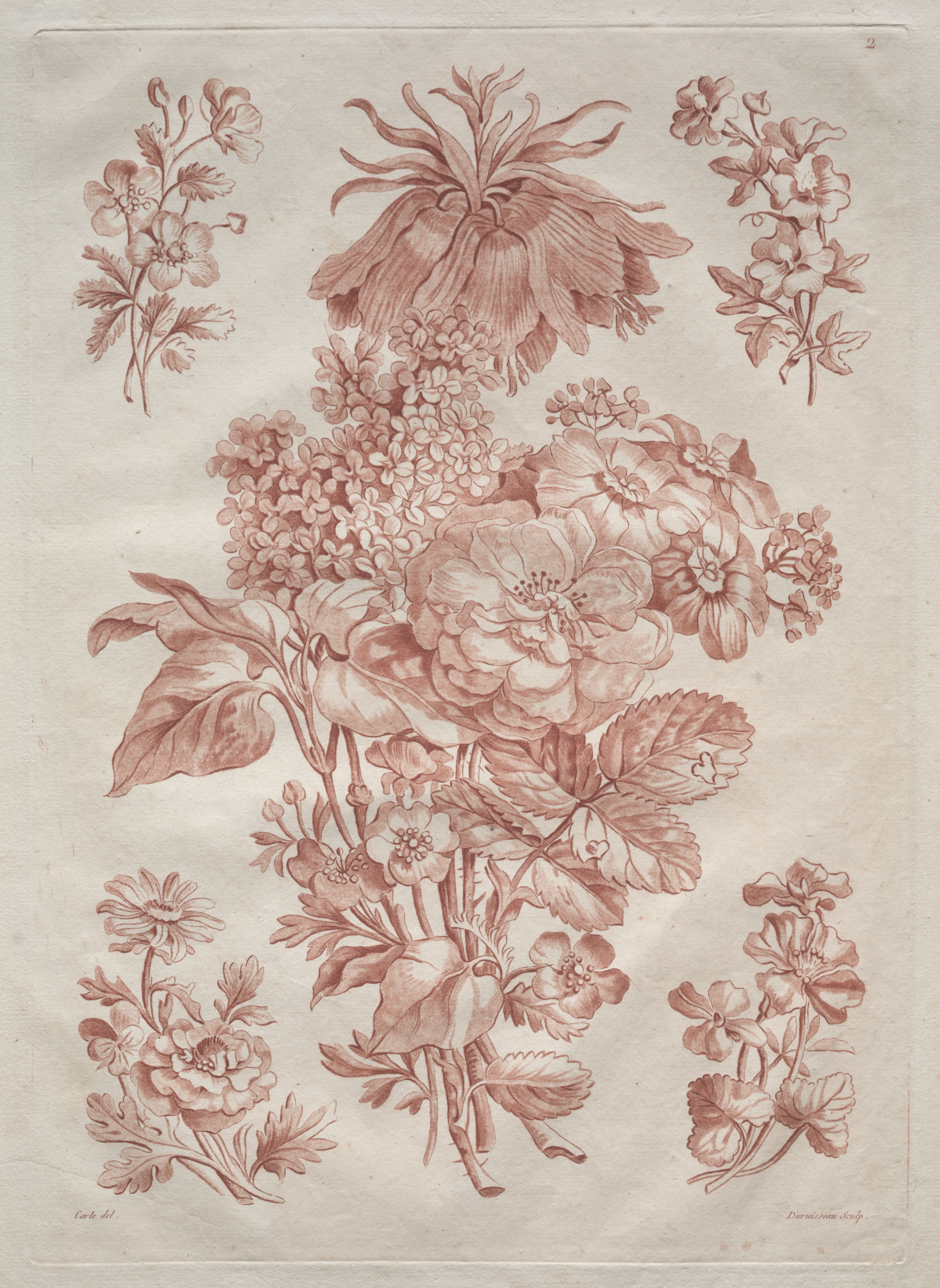The Cleveland Museum of Art
Collection Online as of April 20, 2024

Studies of Flowers after Nature: Spray of Flowers
Date unknown
(French, 1754-?)
published by
(France, 18th Century)
Catalogue raisonné: Dunthorne 268
Location: not on view
Description
Crayon manner etching was invented in the 18th century to simulate the texture of chalk drawings, which were very popular at the time. A tool with toothed points of varying thicknesses set at irregular intervals and angles (mattoir) imitated the random character of grains of chalk on textured paper. Etudes de fleurs d’après nature demonstrates how prints propagated floral designs that could be used in the applied arts. Artisans designing textiles or decorating furniture, for instance, were inspired by the compositions found on prints.- The Flowering of the Botanical Print. The Cleveland Museum of Art, Cleveland, OH (organizer) (March 26-July 3, 2016).Highlights of the Rococo: Norweb Ceramics and Related Arts. The Cleveland Museum of Art, Cleveland, OH (organizer) (November 8, 1983-June 3, 1984).Flower and Fruit Prints and Drawings. The Cleveland Museum of Art, Cleveland, OH (organizer) (May 25-October 10, 1960).
- {{cite web|title=Studies of Flowers after Nature: Spray of Flowers|url=false|author=L. F. Duruisseau, Roubillac|year=null|access-date=20 April 2024|publisher=Cleveland Museum of Art}}
Source URL:
https://www.clevelandart.org/art/1955.475